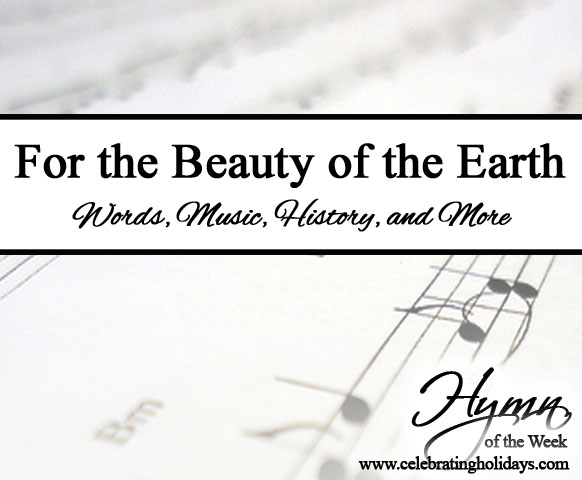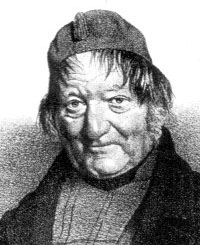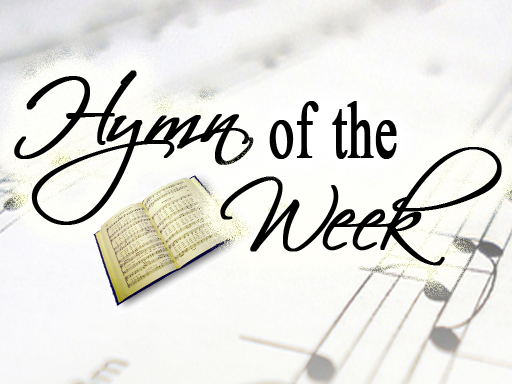For the Beauty of the Earth
This page includes a lyric video, history, sheet music, and other resources for the classic hymn “For the Beauty of the Earth.” Enjoy!

Enjoy this You Tube video, performed by Michelle Swift, with lyrics for “For the Beauty of the Earth”:
History of “For the Beauty of the Earth”
Words by Folliot Sandford Pierpoint (1835-1917), Published in 1864
Folliot was born and raised in Bath, England. He graduated with honors from Queen’s College, Cambridge in 1857 and went on to serve as a professor of classics at Somerset College.1 Afterward, he spent time in Devonshire and other towns, and he willingly taught whenever he was given the opportunity.2 Folliot also published several volumes of poetry and a number of hymns. His hymn “For the Beauty of the Earth” was first published in Lyra Eucharistica by Orby Shipley (second edition, 1864).
Of the writing of this hymn, Hymnary.org records:
“In 1863, Folliott S. Pierpoint was wandering through the English countryside around the winding Avon River. As he looked on the peaceful beauty surrounding him, he was inspired to reflect on God’s gifts to his people in creation and in the church. Above all, Pierpoint thought of the sacrifice of Christ, in the greatest of sacrifices, that of his life in return for ours. He thus originally wrote the text of “For the Beauty of the Earth” as a hymn for the Lord’s Supper. The original chorus read, “Christ, our God, to thee we raise this, our sacrifice of praise.” The hymn was meant not only as a song of thanksgiving, but as the only thing we could give Christ in return for his mercy and love: a hymn of praise laid upon the altar as a sacrifice. Editors have since altered the refrain so it has become a more generic hymn of thanksgiving, but as it stands, it takes on a deeper meaning when understood as something we not only sing, but offer up to God.”3
Tune “Dix” by Conrad Kocher (1786-1872), Published in 1838
Conrad was born and raised in Württemberg (part of modern day Germany). He was trained as a teacher and moved to St. Petersburg, Russia, to work as a tutor at the age of seventeen.4 While in Russia, Conrad had the opportunity to study piano and composition.5 His love for music, and his interest in Haydn and Mozart, compelled him to pursue a career in the field and return to Germany in1811.6 Conrad’s early compositions attracted the attention of the prestigious Cotta music firm. They published some of his work and even sent him to Italy for a time to study music.7
In 1821, Kocher founded the School for Sacred Song in Stuttgart and became influential in bringing reforms to German church music.8 In 1823, he published a popular treatise on church music. Kocher also served, for almost 40 years (1827-1865), as an organist and choir director at Striftsckirche, a church in Stuttgart.9 During the course of his life, Kocher published a collection of hymns, wrote two operas, created an oratorio, and produced numerous other smaller works. His most popular is the tune called “Dix.” This tune was originally published by Conrad in his collection of German hymns Stimmen aus den Reiche Gottes, 1838. It was adapted by William H. Monk, editor of Hymns, Ancient and Modern, 1861, in order to pair it with the hymn “As with Gladness Men of Old” by William C. Dix (thus the tune name).10 It has since become more popularly known in its association with the hymn “For the Beauty of the Earth.”
Additional Resources for “For the Beauty of the Earth”:
Sheet Music (PDF Compliments of Hymnary.org)
Guitar Chords (Links to Ultimate Guitar)
Visit Hymnary.org or Hymn Time.com for more on this hymn.
See our Hymn of the Week page for a list of the hymns that are included on this site.
This page was created by:

We welcome your ideas! If you have suggestions on how to improve this page, please contact us.
You may freely use this content if you cite the source and/or link back to this page.
Sources:
1 Erickson, J. Irving. Sing It Again! A Handbook on The Covenant Hymnal. Covenant Press, 1985, p. 372.
2 Reynolds, William Jensen. Hymns of Our Faith: A Handbook for the Baptist Hymnal. Broadman Press, 1964, p. 383.
3 “For the Beauty of the Earth,” Hymnary.org.
4 “Dix” (Kocher), Hymnary.org quoting from the Psalter Hymnal Handbook.
5 Erickson, J. Irving, p. 331.
6 “Dix” (Kocher).
7 Ibid.
8 Hustad, Donald P. Dictionary Handbook to Hymns for the Living Church. Hope Publishing Company, 1978, p. 270.
9 “Dix” (Kocher).
10 Reynolds, William Jensen, p. 46.







